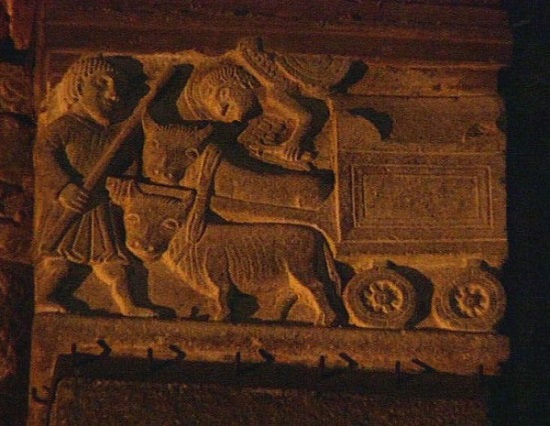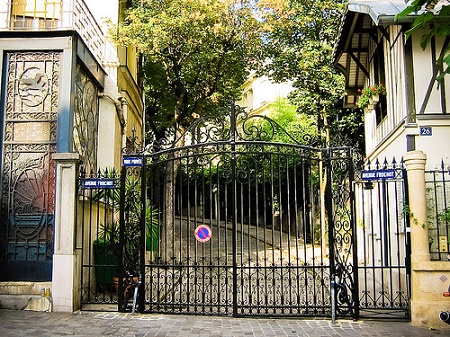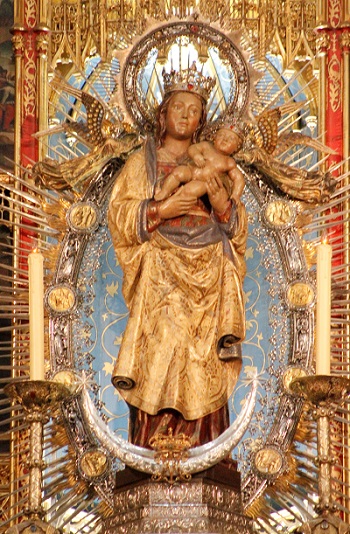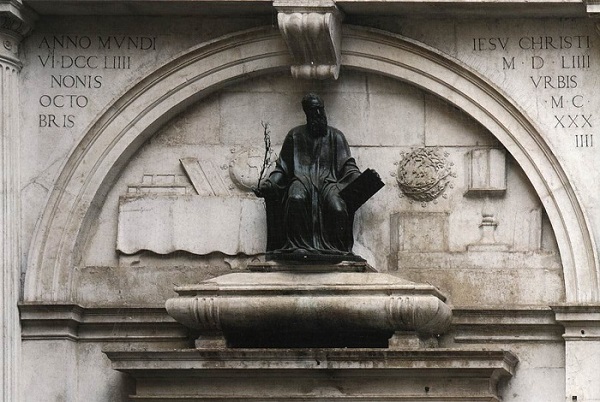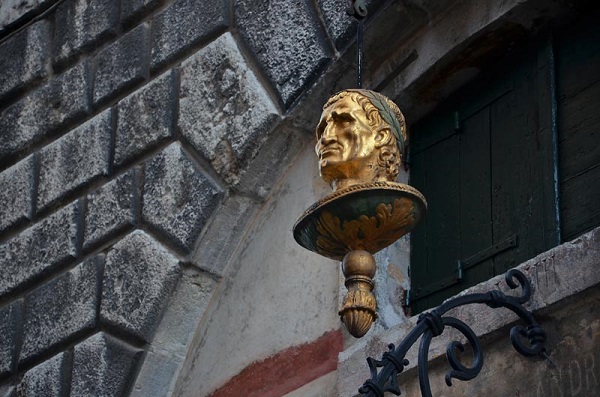Carved to the right of the main doorway into Lucca Cathedral is a labyrinth measuring some 50cm in diameter. The accompanying inscription reads: “This is the labyrinth designed by the Cretan Daedalus. None of those who ventured into it ever found their way out, with the exception of Theseus, who did so thanks to the thread Ariadne gave him out of love.” Various explanations have been put forward regarding the symbolic significance of the labyrinth. The one explained below was one the last hope of salvation for those sentenced to death. On his way to the scaffold, the condemned man was brought to the labyrinth, and if he could, at his first attempt, trace a route through it, then his life was spared.
Labyrinths
According to legend, one of the first ever labyrinths was constructed by Daedalus to contain the Minotaur, a monster born of the love of Queen Pasiphae, wife of Minos, King of Crete, for a bull. Archaeologists have argued that the elaborate ground plan of Minos’s royal palace at Knossos (Crete) was the origin of this legend. Only three people were said to have found their way through this mythical labyrinth. One was Theseus, who had come to Crete to kill the monster, he was helped in his task by Ariadne, Minos’s daughter, who had fallen in love with him and gave him a thread so that he could find his way back out [the famous ‘Ariadne’s thread’]. The other two were Daedalus himself and his son Icarus, after Minos had imprisoned them there. Some legends say that the kind was anxious that the secret of the labyrinth should never be betrayed, others claim the imprisonment was punishment for giving Ariadne the idea of the thread. The labyrinth was so perfectly designed that even Daedalus could only find his way out by flying above it, having made himself and his son wings out of feathers and wax.
Designs or engravings of labyrinths are to be found in numerous ancient civilisations [Mesopotamian, Egyptian, Hopi, Navajo, etc] and there are vestiges in Europe dating back to prehistoric times. The symbol of the labyrinth was also used in early Christianity and can be seen in the Rome catacombs, as well as in Italian churches such as San Michele Maggiore [Pavia] and in the Lucca Cathedral. There was also a mosaic in San Savino [Piacenza]. in France there are fine examples int he cathedrals of Chartres and Rheims. Usually these are located on the western side of the church, the direction associated with demons and death because it is in the west that the sun sets. As it was believed that demons could only move in straight lines, the elaborate path of the labyrinth prevented them reaching the altar.
The labyrinth is also associated with ideas regarding the course of life, reflecting the notion that Man is lost within the Universe and does not know where he comes from or where he is going. But the very centre of the labyrinth , reached after an often painful and tortuous journey of initiation, might well represent a point of divine salvation, a heavenly Jerusalem.
The flight of Daedalus and Icarus to arrive at this goal therefore symbolises the elevation of the spirit towards knowledge and of the soul towards God. Similarly, the thread with which Ariadne supplies Theseus shows how the love of one person for another can provide another way out of the absurdity of the human condition.


